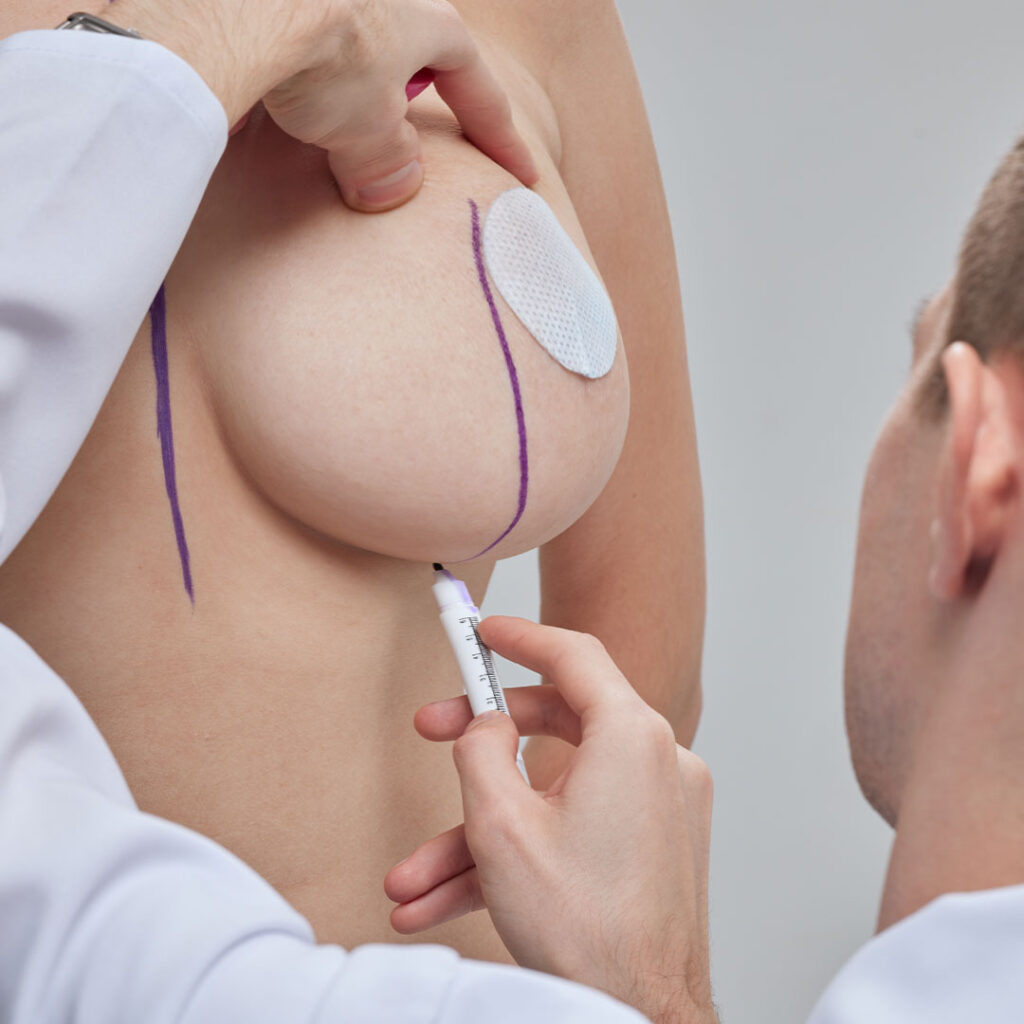Breast Reduction Surgery
Breast reduction surgery is a cosmetic procedure that reduces the size of overly large breasts that cause discomfort, pain, or self-consciousness. By removing excess breast tissue, fat, and skin, the surgery helps patients achieve a more balanced and proportionate breast size, enhancing their overall appearance and quality of life.
How is breast reduction surgery done?
Breast reduction surgery is typically performed under general anesthesia in a hospital or outpatient surgical center. The surgeon makes an incision around the nipple, areola, and down each breast, removing excess breast tissue, fat, and skin. The breast is reshaped, and the nipple and areola are repositioned. In some cases, the nipple and areola may need to be removed and reattached as a graft for immense breasts.

Who is suitable for breast reduction surgery?
Breast reduction surgery is suitable for individuals with large breasts that cause:
- Chronic back, neck, and shoulder pain
- Shoulder grooves from bra straps
- Chronic rash or skin irritation under the breasts
- Nerve pain
- Restricted participation in physical activities
- Poor self-image due to large breasts
- Difficulty fitting into bras and clothing
Breast reduction surgery generally isn’t recommended for people who smoke, are very obese, or do not want scars on their breasts.

What should patients pay attention to before surgery?
- Please consult a board-certified plastic surgeon to discuss their desired breast size, appearance, and expectations.
- Complete a mammogram if recommended.
- Quit smoking for at least six weeks before and after surgery
- Avoid aspirin, anti-inflammatory drugs, and herbal supplements to control bleeding during surgery
Breast reduction surgery time, anesthesia method, and incisions
Breast reduction surgery usually takes 3 to 5 hours and is performed under general anesthesia. The incisions typically follow a pattern around the nipple and areola, extending vertically down to the breast crease and sometimes horizontally along the crease.
Post-operative recovery process
The post-operative recovery process following breast reduction surgery is crucial for achieving optimal results and ensuring patient comfort. During this period, patients can expect tenderness, swelling, and bruising in the breasts, which gradually subsides over a few weeks. A surgical bra must be worn to support and minimize swelling, while physical activity should be limited for 4 to 6 weeks to allow proper healing. It is essential to follow your surgeon’s post-operative care instructions, which may include guidelines for wound care, pain management, and activity restrictions. Suture traces will gradually fade as the breasts heal, although they won’t disappear completely. Adhering to your surgeon’s advice and attending follow-up appointments can ensure a smooth recovery and enjoy the long-lasting benefits of breast reduction surgery.
Complications
Potential complications of breast reduction surgery include:
- Bleeding
- Infection
- Adverse reaction to anesthesia
- Scarring
- Difficulty or inability to breastfeed
- Differences in size, shape, and appearance of the breasts
Rarely, loss of the nipples and surrounding skin or sensation
If complications arise, it is crucial to contact your surgeon for appropriate management and treatment.

If you’re considering breast reduction surgery, don’t hesitate to contact us at Unimed Health. We’re here to help you make an informed decision and provide the highest quality care and support as you embark on this life-changing journey—Trust Unimed Health to help you achieve the relief and confidence you deserve.
- Please consult a board-certified plastic surgeon to discuss their desired breast size, appearance, and expectations.
- Complete a mammogram if recommended.
- Quit smoking for at least six weeks before and after surgery
- Avoid aspirin, anti-inflammatory drugs, and herbal supplements to control bleeding during surgery
